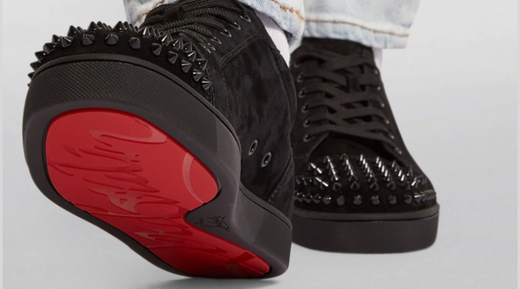
Designer Clothing: A Smarter, More Sustainable Choice Than Fast Fashion
Why Designer Clothing is More Sustainable Than Fast Fashion
In the world of fashion, sustainability has become a major conversation topic. As fast fashion continues to dominate the industry, there’s a growing movement toward more ethical and eco-friendly clothing choices. One of the key alternatives to fast fashion? Designer clothing. While the high price tag of designer pieces might seem to contradict the idea of sustainability, the reality is that designer fashion often outperforms fast fashion in terms of quality, durability, ethical practices, and its overall environmental impact. Here’s why designer clothing is a smarter, more sustainable choice for both you and the planet.
1. Quality and Longevity: The Foundation of Sustainability
Fast fashion is built on speed and volume, producing trendy, low-cost clothing that’s designed to be worn a few times and then discarded. This ‘throwaway culture’ not only contributes to textile waste but also encourages a mindset of constant consumption. In contrast, designer clothing is centred around longevity.
Designer pieces are often crafted with an eye for quality, using superior fabrics and meticulous craftsmanship. This focus on durability means that these garments are made to last for years, if not decades. Instead of fading or falling apart after a few washes, a well-made designer item can remain in top condition for much longer. This reduces the need for constant replacements, which is a core principle of sustainable fashion—investing in fewer, higher-quality pieces rather than mindlessly consuming endless low-cost items.
2. Durability: The Role of High-Quality Materials
When it comes to durability, designer fashion excels. These brands prioritize sourcing high-quality materials that are built to withstand wear and tear. The fabrics used in designer clothing—such as organic cotton, premium wool, or luxury silks—are typically much more durable than the inexpensive synthetics commonly found in fast fashion.
Sustainable fashion brands often go the extra mile by choosing eco-friendly and responsibly sourced materials. Many designers use organic cotton, hemp, and other natural fibers that require fewer pesticides and less water to produce. These materials not only last longer but also have a less harmful environmental impact throughout their lifecycle.
Both Stone Island and C.P. Company showcase eco-friendly materials in their collections. Many of Stone Island’s carryover pieces, like the Soft Shell Jackets are made from recycled polyester—a step in the right direction for sustainability. Similarily, C.P. Company's Goggle and Lens Shell Jackets are crafted from recycled polyester yarn, while their Eco Chrome-R Jackets are constructed from recycled nylon!
3. Ethical Practices: Fair Wages and Safe Working Conditions
Another significant advantage of designer clothing is the ethical practices that many high-end brands uphold. Unlike fast fashion brands that often outsource production to factories in developing countries where labor laws can be lax, many designer labels prioritize fair wages and safe working conditions for their employees.
Sustainable fashion advocates for a transparent and ethical supply chain, ensuring that workers receive fair compensation for their labor and work in safe, humane environments. By supporting designers who value ethics over profits, consumers are directly contributing to the well-being of garment workers and promoting positive change within the industry.
That being said, there has been instances in the past whereby high end labels have been found to have poor working conditions such as Nike, however we do believe that in general, designer brands have far safer working conditions.
4. Responsible Consumption: Buying Less, But Better
Fast fashion’s allure lies in its accessibility and affordability, but this has led to a culture of overconsumption. Many consumers buy items they don’t need simply because they’re cheap and readily available. Designer fashion, on the other hand, encourages more thoughtful consumption.
Sustainable fashion urges consumers to buy fewer, but better-quality garments. Instead of amassing a closet full of inexpensive, poorly-made clothes, investing in a few timeless designer pieces ensures that you are choosing items that will serve you for many years to come. This shift toward responsible consumption helps reduce the strain on both your wardrobe and the planet.
5. Environmental Impact: Less Waste, Less Harm
One of the most concerning issues with fast fashion is its environmental toll. The industry is responsible for a significant portion of global waste, water pollution, and carbon emissions. It is the second-biggest consumer of water and responsible for 10% of global CO2 emissions. Fast fashion companies produce massive quantities of cheap clothes, much of which ends up in landfills when it’s no longer in style or has worn out.
Designer brands, however, typically produce fewer pieces, focusing on quality over quantity. This significantly reduces textile waste and the overall environmental impact. Many designers are also taking steps to reduce their carbon footprint, from utilizing energy-efficient production methods to incorporating eco-friendly packaging.
Additionally, because designer clothing is made to last longer and retain its value over time, the likelihood of a garment being discarded prematurely is much lower. This directly contributes to a reduction in waste, water pollution, and carbon emissions.
6. Reducing Textile Waste
The issue of textile waste is a major environmental concern. Every year, millions of tons of clothing end up in landfills, much of it from fast fashion retailers who produce clothing in massive quantities with limited lifespan. Designer clothing, by contrast, tends to be produced in smaller quantities, often with timeless designs that never go out of style. As a result, these pieces are less likely to be disposed of quickly, as they remain relevant and wearable for years.
Furthermore, some designers are embracing innovative solutions to combat textile waste. Many are introducing recycling programs, upcycling old garments, or using leftover materials from previous collections to create new pieces. These efforts help keep clothing out of landfills and promote a circular economy where materials are reused instead of discarded.
Warranty schemes held by brands such as Canada Goose and Moose Knuckles, are a fantastic way of reducing waste, as you are able to take any issues to them and they will repair or replace the coat for you (charges can incur). C.P. Company have also just brought out 'The Longevity Hub' which offers repairs on all C.P. Company products, again this will come with a cost, but is a superb initiative to help people keep their items for longer.
Conclusion: The Case for Designer Fashion
While fast fashion may seem like a more affordable and accessible option, it comes at a significant environmental and ethical cost. Designer clothing, on the other hand, stands out as a more sustainable choice due to its emphasis on quality, longevity, ethical labor practices, and environmental responsibility. By investing in designer pieces, consumers can make a positive impact on the planet, reduce waste, and support ethical production standards.
In a world where conscious consumerism is becoming more important than ever, choosing designer clothing over fast fashion isn’t just a fashion statement, it’s a vote for a more sustainable future.


Leave a comment
This site is protected by hCaptcha and the hCaptcha Privacy Policy and Terms of Service apply.